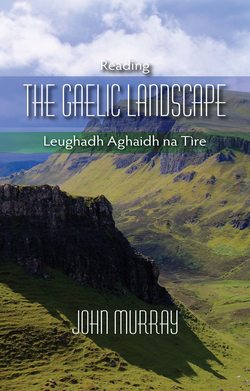Читать книгу Reading the Gaelic Landscape - John Murray - Страница 14
4.2 Adjectives and Compound Nouns
ОглавлениеAs in many other European languages, adjectives usually follow the noun in Gaelic. Where more emphasis is required, they can precede the noun. Geàrr Aonach (gyar OEnuch), Glen Coe, meaning the short, steep ridge and Garbh Bheinn (garav vyn), Ardgour, are examples of emphatic abruptness and roughness respectively. Note how the preceding adjective causes lenition of the noun following, but is not lenited itself. A less emphatically rough mountain is Beinn Gharbh in Assynt, where the adjective following is lenited in the usual way to agree with the feminine noun. To revise: an adjective following a masculine noun is not lenited, as in Càrn Mòr.
There is an argument that, in some cases where adjectives precede nouns, this is not a reflection of emphasis. What we see in examples like Geal Chàrn in Rannoch and Crom Chreag in Glen Quaich, for example, is evidence of the naming style of early Irish and Gaelic, where the specific precedes the generic and lenites the noun, whatever its gender (Drummond 2009). Preceding adjectives are often colours like geal and glas - the latter is the most common - and tend to be monosyllables. Many of these are attached to beinn as in Garbh Bheinn above. Sometimes close compound nouns hyphenate or fuse as in Fionn-phort or Fionnphort in the Ross of Mull.
Specific nouns can also precede generic ones. Many of these qualify the word beinn, as in Cròic Bheinn - Antler Mountain, Applecross, Ladhar Bheinn - Hoof Mountain, Knoydart and Slat Bheinn - Rod Mountain, Skye. Many examples lie within the area of Norse colonisation and may reflect its naming pattern. Suilbheinn - pillar mountain in Assynt is a hybrid of Norse and Gaelic, where beinn has replaced fyall (fell).
